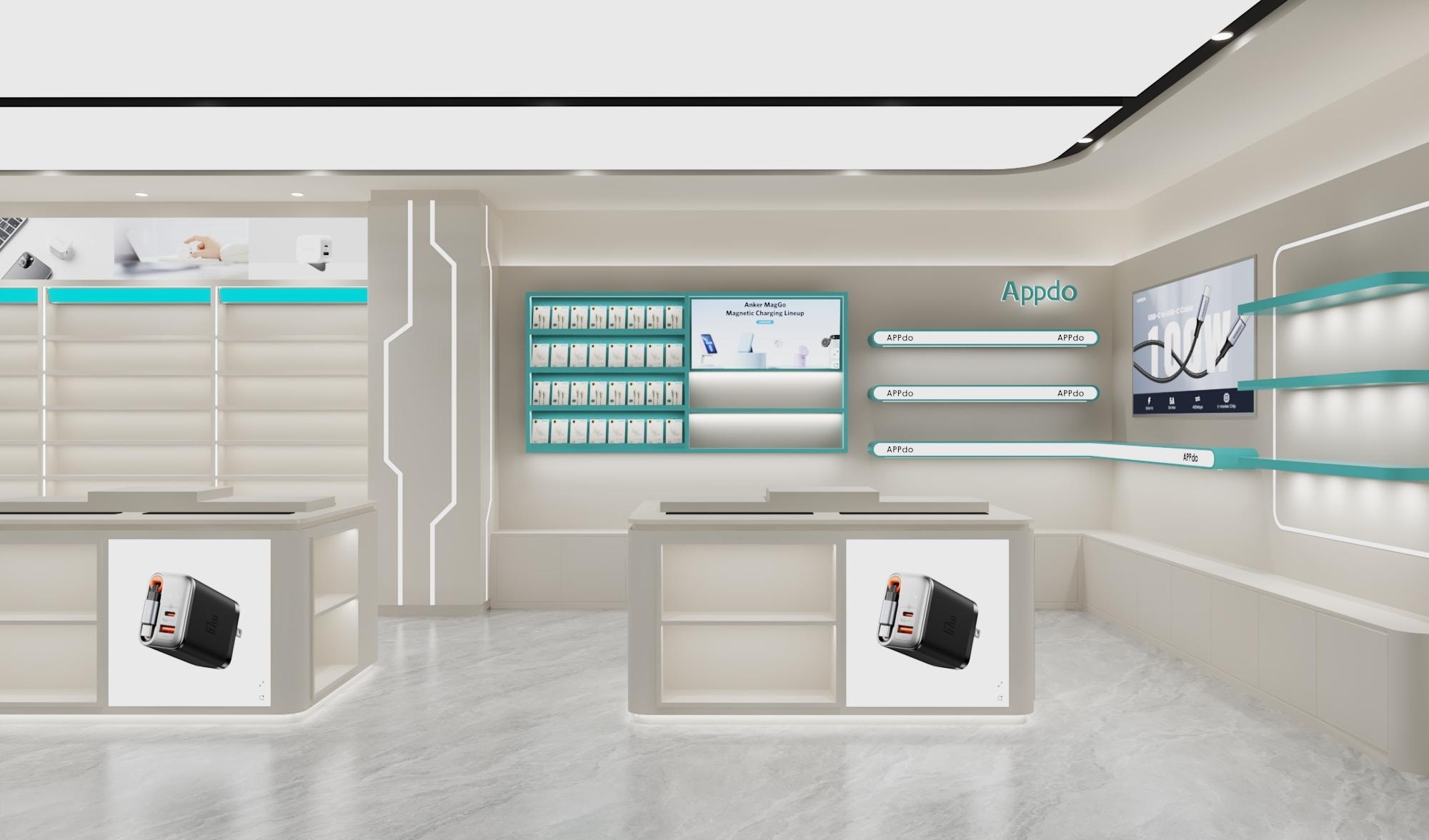
What is milliamp-hour (mAh) and what does it mean for choosing a charger?
Updated on August 27, 2025
Smartphones, laptops, power banks—their battery capacities all revolve around the unit "mAh," but its implications go far beyond just a number.
Milliampere-hour (mAh) is a unit that measures battery capacity, directly reflecting a battery's energy storage capability . Generally, a higher value means the battery can power your device for a longer time.
Table of contents
For everyday consumers, this unit frequently appears in the specs of devices like phones, power banks, and Bluetooth earbuds.

mAh stands for milliampere-hour. It is formed by combining the current unit "milliampere" (mA) and the time unit "hour" (h) .
From a physics perspective, the formula for battery capacity (Q) is:
Capacity (mAh) = Current (mA) × Time (h) .
This means a battery rated at 1000mAh can theoretically power a device drawing 100mA of current for 10 hours .
It's important to note that mAh is not a unit of energy but a unit of electric charge . It intuitively indicates the size of the battery's "charge tank," but it doesn't fully represent the actual energy content.
The mAh rating is directly tied to a device's battery life. A larger battery capacity typically means the device can run longer before needing a recharge.
For products like power banks (portable chargers), the mAh number determines how many times it can charge your other devices. For example, a 10,000mAh power bank can roughly fully charge a smartphone with a 3,000mAh battery about 3 times (actual performance is affected by energy conversion losses) .
When choosing electronics, don't focus solely on the mAh number. Real-world battery performance also depends on factors like voltage, energy density, and discharge efficiency . Two lithium batteries with the same mAh rating might differ in size and endurance if one uses higher energy-density materials.
While a higher mAh rating usually suggests longer usage time, the relationship isn't perfectly linear.
Actual battery life is influenced by multiple factors:
Screen size, processor efficiency, software optimizations, and usage habits all play significant roles . A phone with a smaller battery but a more power-efficient chip might outlast a phone with a larger battery and a less efficient processor.
Environmental temperature also affects performance. Low temperatures can increase the internal resistance of lithium batteries, leading to reduced runtime, though this is often temporary . However, consistently charging in low temperatures can cause lithium metal plating, potentially causing permanent capacity loss.
A common confusion arises when a 10,000mAh power bank doesn't fully charge a 3,000mAh phone three times. This isn't necessarily due to false advertising but primarily because of voltage conversion loss .
The capacity marked on a power bank refers to the total mAh of its internal cells. However, the actual output capacity available to your device is lower due to energy loss during voltage conversion (typically around 15-30%). For instance, a 20,000mAh power bank might only deliver about 13,000mAh of charge at a 5V output.
The unit that truly defines energy content is the Watt-hour (Wh), calculated as:
Energy (Wh) = Capacity (mAh) × Voltage (V) / 1000 . This is why airlines restrict batteries based on their Wh rating (usually under 100Wh), not the mAh value .
❌ mAh equals milliamperes (mA): mAh is a unit of capacity, while mA is a unit of current intensity. They are not interchangeable .
❌ Higher mAh always means better device performance: A larger battery capacity extends runtime, but overall device performance depends more on processing chips, software, and other components . Two phones with identical battery capacities can have very different endurance based on their power efficiency.
❌ mAh ratings are directly comparable across all brands: Real-world output can be affected by temperature, age, and discharge curves. Some manufacturers might exaggerate mAh ratings, so prioritize products with authoritative certifications .
Match capacity to your usage: Frequent travelers or outdoor enthusiasts might prefer high-capacity power banks (e.g., 20,000mAh+). For daily commuting, a 10,000mAh power bank is often sufficient .
Prioritize energy density and safety: High energy density allows for more capacity in a smaller size. Always ensure devices have safety features like overcharge protection and temperature control .
Calculate based on device draw: If a device has a working current of 500mA and a battery capacity of 3,000mAh, its theoretical runtime is 6 hours (3000 ÷ 500). In practice, it's wise to reserve about 20% capacity buffer .
When selecting a power bank, look beyond the prominent mAh number. Pay attention to a less conspicuous but crucial parameter: the Rated Capacity .
Reputable power banks display this value. For example, a 10,000mAh power bank might have small print stating "Rated Capacity: 6500mAh (5V/2A)."
This rated capacity indicates the actual charge available to your device at a specific output voltage, accounting for conversion losses .
Remember, your device's battery life is determined not just by its capacity (mAh) but also by your usage patterns, the device's power consumption, and environmental factors. The next time you see that mAh tag, you'll see it as more than just an isolated number.

01 What Exactly is mAh?
mAh stands for milliampere-hour. It is formed by combining the current unit "milliampere" (mA) and the time unit "hour" (h) .
From a physics perspective, the formula for battery capacity (Q) is:
Capacity (mAh) = Current (mA) × Time (h) .
This means a battery rated at 1000mAh can theoretically power a device drawing 100mA of current for 10 hours .
It's important to note that mAh is not a unit of energy but a unit of electric charge . It intuitively indicates the size of the battery's "charge tank," but it doesn't fully represent the actual energy content.
02 Why Does mAh Matter?
The mAh rating is directly tied to a device's battery life. A larger battery capacity typically means the device can run longer before needing a recharge.
For products like power banks (portable chargers), the mAh number determines how many times it can charge your other devices. For example, a 10,000mAh power bank can roughly fully charge a smartphone with a 3,000mAh battery about 3 times (actual performance is affected by energy conversion losses) .
When choosing electronics, don't focus solely on the mAh number. Real-world battery performance also depends on factors like voltage, energy density, and discharge efficiency . Two lithium batteries with the same mAh rating might differ in size and endurance if one uses higher energy-density materials.
03 mAh and Battery Life: It's Not Straightforward
While a higher mAh rating usually suggests longer usage time, the relationship isn't perfectly linear.
Actual battery life is influenced by multiple factors:
Screen size, processor efficiency, software optimizations, and usage habits all play significant roles . A phone with a smaller battery but a more power-efficient chip might outlast a phone with a larger battery and a less efficient processor.
Environmental temperature also affects performance. Low temperatures can increase the internal resistance of lithium batteries, leading to reduced runtime, though this is often temporary . However, consistently charging in low temperatures can cause lithium metal plating, potentially causing permanent capacity loss.
04 Understanding mAh in Power Banks
A common confusion arises when a 10,000mAh power bank doesn't fully charge a 3,000mAh phone three times. This isn't necessarily due to false advertising but primarily because of voltage conversion loss .
The capacity marked on a power bank refers to the total mAh of its internal cells. However, the actual output capacity available to your device is lower due to energy loss during voltage conversion (typically around 15-30%). For instance, a 20,000mAh power bank might only deliver about 13,000mAh of charge at a 5V output.
The unit that truly defines energy content is the Watt-hour (Wh), calculated as:
Energy (Wh) = Capacity (mAh) × Voltage (V) / 1000 . This is why airlines restrict batteries based on their Wh rating (usually under 100Wh), not the mAh value .
05 Common Misconceptions about mAh
❌ mAh equals milliamperes (mA): mAh is a unit of capacity, while mA is a unit of current intensity. They are not interchangeable .
❌ Higher mAh always means better device performance: A larger battery capacity extends runtime, but overall device performance depends more on processing chips, software, and other components . Two phones with identical battery capacities can have very different endurance based on their power efficiency.
❌ mAh ratings are directly comparable across all brands: Real-world output can be affected by temperature, age, and discharge curves. Some manufacturers might exaggerate mAh ratings, so prioritize products with authoritative certifications .
06 Practical Tips for Choosing Batteries and Power Banks
Match capacity to your usage: Frequent travelers or outdoor enthusiasts might prefer high-capacity power banks (e.g., 20,000mAh+). For daily commuting, a 10,000mAh power bank is often sufficient .
Prioritize energy density and safety: High energy density allows for more capacity in a smaller size. Always ensure devices have safety features like overcharge protection and temperature control .
Calculate based on device draw: If a device has a working current of 500mA and a battery capacity of 3,000mAh, its theoretical runtime is 6 hours (3000 ÷ 500). In practice, it's wise to reserve about 20% capacity buffer .
When selecting a power bank, look beyond the prominent mAh number. Pay attention to a less conspicuous but crucial parameter: the Rated Capacity .
Reputable power banks display this value. For example, a 10,000mAh power bank might have small print stating "Rated Capacity: 6500mAh (5V/2A)."
This rated capacity indicates the actual charge available to your device at a specific output voltage, accounting for conversion losses .
Remember, your device's battery life is determined not just by its capacity (mAh) but also by your usage patterns, the device's power consumption, and environmental factors. The next time you see that mAh tag, you'll see it as more than just an isolated number.
